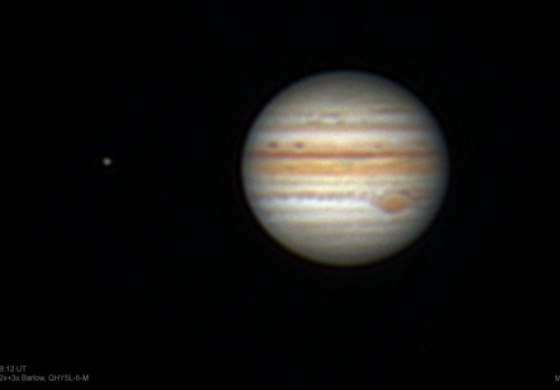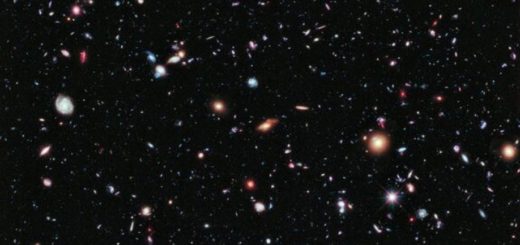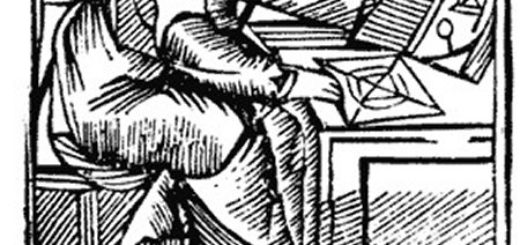Jupiter At Opposition August 19-20, Now At Its Best

Jupiter at opposition
In 2021, mighty Jupiter will be in opposition to the sun on the night of August 19-20. That’s when Earth will fly between the sun and Jupiter, and Jupiter will appear opposite the sun in our sky. Jupiter is always bright, but it’s brightest when at or near opposition. In late July and early August, you’ll find Jupiter easily as a blazing light, rising in the east by mid-evening. Start watching it now, and enjoy it as we on Earth sweep up from behind it, in our smaller, faster orbit around the sun.
Jupiter will come to opposition on August 20 at about 00:00 UTC; translate UTC to your time. In United States time zones, that’s August 19 at 8 p.m. Eastern Daylight Time, 7 p.m. Central Daylight Time, 6 p.m. Mountain Daylight Time, 5 p.m. Pacific Daylight Time, 4 p.m. midnight Alaskan Daylight Time, and 2 p.m. Hawaiian Time. Jupiter will be closest to us only five hours after the exact moment of opposition. Its closest point to Earth will come at about 05:00 UTC on August 20.
The night of opposition is special. But opposition marks the middle of the best time of year to see an outer planet. So start watching Jupiter now, especially around the nights of July 23 to 26, 2021, when it’ll be near the moon. If you miss Jupiter near the moon in July, try again in August.
Star chart showing moon moving past Jupiter and Saturn in July, 2021.
Jupiter (and Saturn) will be rising in the east in early evening in late July. They’ll be the bright objects near the moon on the nights of July 23 to 26, 2021. Read more.
Star chart showing moon moving past Jupiter and Saturn in August, 2021.
Jupiter (and Saturn) will be rising in the east at sunset in late August. They’ll be the bright objects near the moon on the nights of August 19 to 22, 2021. Read more.
Jupiter at opposition near Saturn on sky’s dome
Jupiter at opposition has been doubly exciting in recent years. That’s because Jupiter and Saturn had their great conjunction in 2020. Astronomers use the word conjunction to describe meetings of planets and other objects on our sky’s dome. They use the term great conjunction to describe meetings of Jupiter and Saturn, our solar system’s two biggest worlds. After the 2020 conjunction, these two worlds won’t come to conjunction again until 2040.
As viewed from above the solar system, Jupiter passed between Saturn and the sun on December 21, 2020. In our sky, we’ve seen bright Jupiter near golden Saturn for some years. So it should be no surprise that Saturn’s opposition comes around now, too. In 2021, Saturn reaches opposition on on August 1-2.
Both Jupiter and Saturn will be in front of the constellation Capricornus the Sea-goat at opposition. Saturn is in Capricornus now and Jupiter is just across the border in Aquarius. Jupiter will cross into Capricornus around August 18 and mark the eastern border of the Sea-goat. The king of planets will remain in front of Capricornus until mid-December 2021, when it will cross back into Aquarius.
Saturn, on the other hand, moves more slowly than Jupiter on the sky’s dome (because it’s farther from the sun, and so moves more slowly in orbit). In fact, its slow motion in front of the stars caused early stargazers to call Saturn by a name that meant oldest of the old sheep. Saturn will remain in front of Capricornus until February 2023.
Read more about 2020’s great conjunction of Jupiter and Saturn
Read more: Saturn at opposition August 1-2, near Jupiter
A bright dot of light, with 4 tiny dots of light stretched out in a line parallel to the larger dot’s mid-section.
View at EarthSky Community Photos. | Mohamed Mohamed in Tripoli, Libya, caught Jupiter and its 4 large moons on July 19, 2021. Thank you, Mohamed!
At opposition, Jupiter and Venus at once
As the biggest planet in our solar system, Jupiter is always bright. It shines more brightly than any star in the evening sky. But there’s no way to mistake Saturn for Jupiter. Dazzling Jupiter outshines Saturn by some 18 times.
Among starlike objects in our sky, only Venus is brighter than Jupiter. And Venus is up in the west after sunset while Jupiter is in the east in the evening. Venus is nowhere near Jupiter on the sky’s dome. In fact, it’ll be possible around August 19-20 – the time of Jupiter’s opposition – to see Jupiter and Venus in the same sky at dusk. As if they’re sitting on two ends of a seesaw, they’ll appear appear on opposite sides of the sky. Venus will be blazing low in the west, while Jupiter – opposite the sun – will be sitting low in the east at sunset. As Venus descends toward the western horizon, Jupiter will be ascending in the eastern sky. You’ll need an unobstructed horizon in both directions to see both Venus and Jupiter. As dusk subsides into evening, Venus will be descending in the evening sky. Meanwhile, Jupiter will be ascending in the east.
How often does Jupiter reach opposition?
Jupiter comes to opposition roughly every 13 months. That’s how long Earth takes to travel once around the sun relative to Jupiter. As a result – according to our earthly calendars – Jupiter’s opposition comes about a month later each year.
Two years ago – 2019 – Jupiter’s opposition date was June 10.
Last year – 2020 – it was July 14
This year – 2021 – it’ll be August 12-20
Next year – 2022 – it’ll be September 26.
Jupiter, the failed star
Jupiter isn’t a rocky planet like Earth. It’s more like a failed star, not massive enough or hot enough inside to spark thermonuclear fusion reactions, but some 2 1/2 times more massive than all the other planets in our solar system combined. For Jupiter to shine as stars do, you’d need some 80 Jupiters – rolled into a ball – to be hot enough inside to spark thermonuclear reactions.
Yet on this August night – as Jupiter rises opposite the sun – you can imagine what our Earth would be like if Jupiter did have enough mass to shine as stars do!



 Creators of mankind
Creators of mankind Description of “Tall white aliens”
Description of “Tall white aliens” Where they came from?
Where they came from? About hostile civilizations
About hostile civilizations The war for the Earth
The war for the Earth “Tall white aliens” about eternal life
“Tall white aliens” about eternal life Video: “Nordic aliens”
Video: “Nordic aliens” Aliens
Aliens Alien encounters
Alien encounters The aliens base
The aliens base UFO
UFO Technology UFO
Technology UFO Underground civilization
Underground civilization Ancient alien artifacts
Ancient alien artifacts Military and UFO
Military and UFO Mysteries and hypotheses
Mysteries and hypotheses Scientific facts
Scientific facts


















